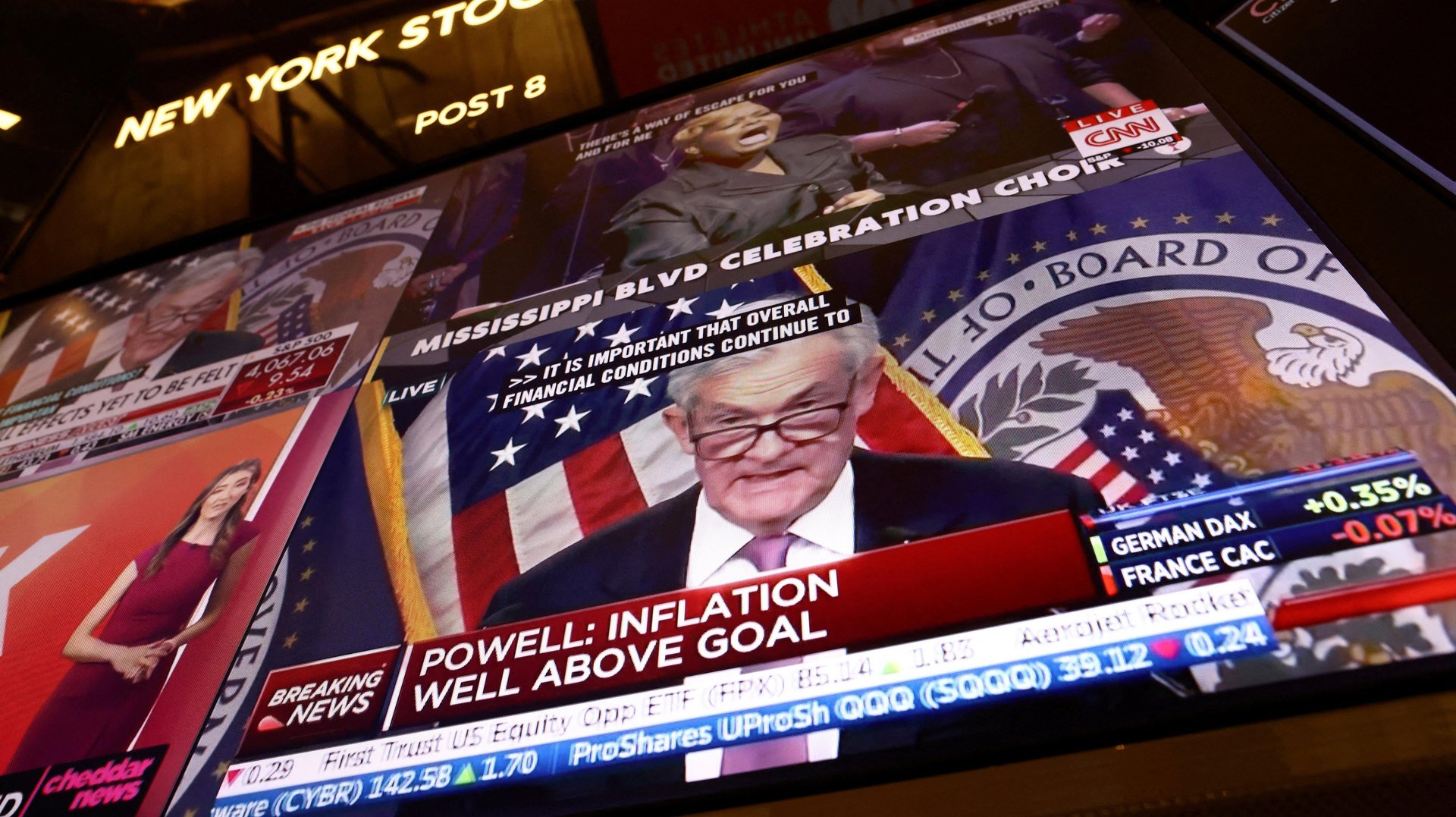What does it mean when the Federal Reserve “skips” instead of hitting “pause”?
The Fed may stop hiking interest rates, but the reprieve could be temporary, with rate hikes resuming later this year

The lexicon of monetary policy includes three different terms to refer to a central bank’s adjustments of its interest rates. An increase is often referred to as a “hike,” and a decrease as a “cut.” A “pause” indicates that the bank has left its key interest rate unchanged.
Suggested Reading
Federal Reserve watchers have introduced a fourth term: the “skip.” In such a scenario, the bank leaves interest rates unchanged—but makes sure markets and the public know that another hike will ensue if inflation doesn’t dip the way the Fed would like.
Related Content
In the US, inflation is not yet at the Fed’s 2% target, but it has been on its way down for 11 months, even as the Fed has been hiking for 15. On an annual basis, the consumer price index hit 4% in May, and the producer price index (which measures the inflation that companies—not consumers—experience) stood at just 1.1%.
When will the Fed stop hiking interest rates?
Analysts at Goldman Sachs expect the Fed to pause its regimen of hiking in June, but then raise rates once again in July: a skip through and through. Other countries have recently followed skipping routines as well. The central banks of Canada and Australia recently hiked rates after a skip.
“Most pauses are relatively short, with hikes generally resuming after 2-3 meetings,” Goldman’s analysts wrote in a research note. “Multiple hikes are subsequently delivered in approximately 80% of instances, suggesting that central banks typically don’t restart hiking cycles unless more than one hike is necessary.”
The Bank of Canada and the Reserve Bank of Australia both have paused and restarted hikes in every rate hiking cycle since 1995, the analysts noted. Most central banks are regular skippers, pausing and restarting roughly half of the time, as part of a constant regimen of tweaking monetary policy. In contrast, the Fed only resorted to regular skipping in its cycle of hikes between 2015 and 2018.
Since 1995, the median pause time in central bank skips has been three-five months, Goldman Sachs noted. This time around, with the Fed and other central banks, pauses are likely to be as short-lived as one month.
